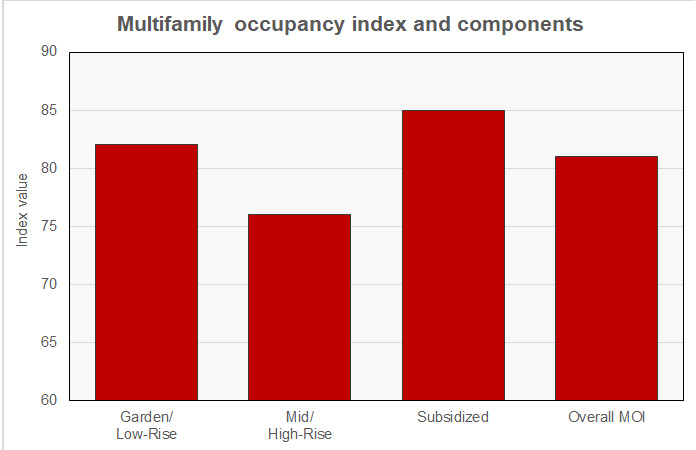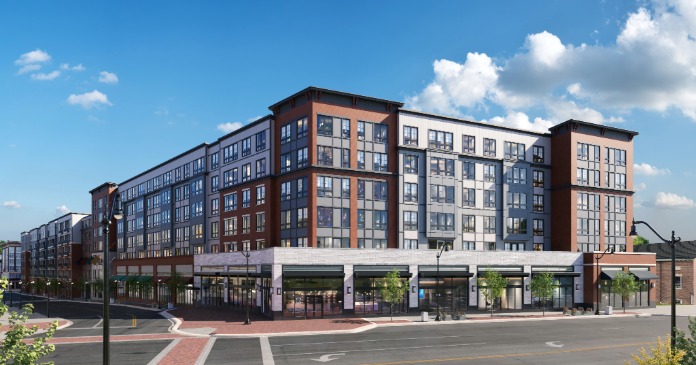Developer confidence in the market for new multifamily housing declined year-over-year in the second quarter, according to results from the August Multifamily Market Survey (MMS) released by the National Association of Home Builders (NAHB). The MMS produces two separate indices. The Multifamily Production Index (MPI) had a reading of 44, down 12 points year-over-year, while the Multifamily Occupancy Index (MOI) had a reading of 81, down eight points year-over-year.
The MPI measures builder and developer sentiment about current production conditions in the apartment and condo market on a scale of 0 to 100. The index and all its components are scaled so that a number below 50 indicates that more respondents report conditions are poor than report conditions are good.
The MPI is a weighted average of four key market segments: three in the built-for-rent market (garden/low-rise, mid/high-rise and subsidized) and one in the built-for-sale (or condominium) market. Even though all four of the components posted year-over-year declines in the second quarter, sentiment about production of garden/low-rise apartments and subsidized apartments remained in positive territory above 50. The component measuring garden/low-rise fell 11 points to 53, the component measuring mid/high-rise units dropped 18 points to 29, the component measuring subsidized units decreased four points to 51 and the component measuring built-for-sale units posted a seven-point decline to 38.

The MOI measures the multifamily housing industry’s perception of occupancies in existing apartments on a scale of 0 to 100. The index and all its components are scaled so that a number above 50 indicates more respondents report that occupancy is good than report it is poor. The reading of 81 indicates existing apartment owners are positive about occupancy.
The MOI is a weighted average of three built-for-rent market segments (garden/low-rise, mid/high-rise and subsidized). The component measuring garden/low-rise units fell nine points to 82, the component measuring mid/high-rise units dropped seven points to 76 and the component measuring subsidized units declined six points to 85.

“Multifamily developers are less optimistic than they were at this time last year,” said Tom Tomaszewski, president of The Annex Group and chairman of NAHB’s Multifamily Council. “Some are struggling with particular local regulations, but the main reason it’s difficult to get projects started is high interest rates.”
“There is no doubt that interest costs and limited financing availability are making it difficult to develop multifamily properties,” said NAHB Chief Economist Robert Dietz. “However, financial markets may become more stable later in the year, as recent weak economic data make it more likely the Fed will cut interest rates.”
The MMS was re-designed last year to produce results that are easier to interpret and consistent with the proven format of other NAHB industry sentiment surveys. Until there are enough data to seasonally adjust the series, changes in the MMS indices should only be evaluated on a year-over-year basis.
For additional information on the MMS, visit www.nahb.org/mms.













